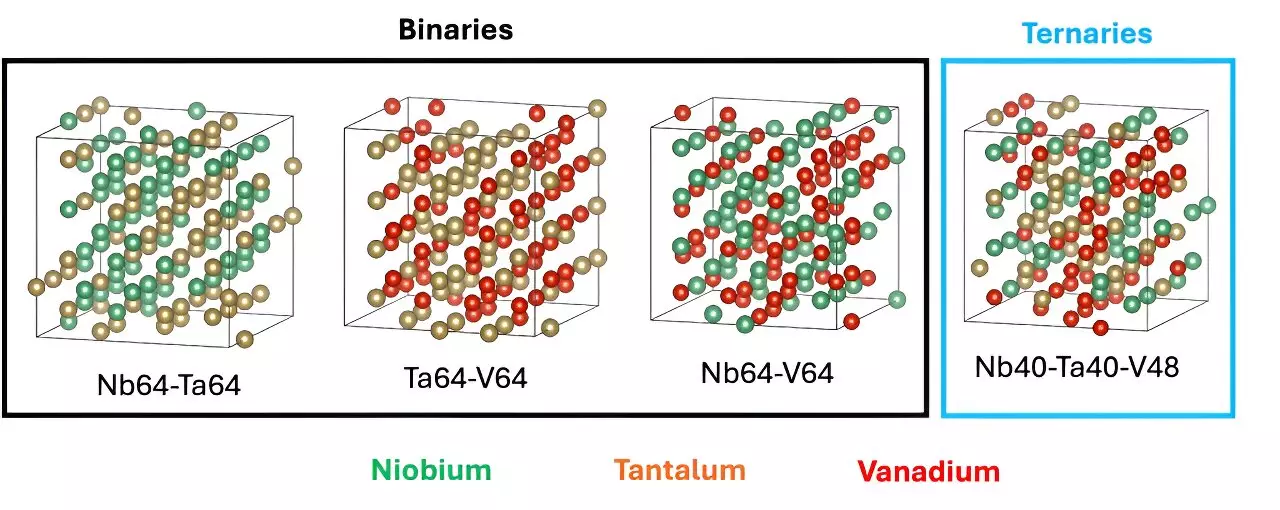Nuclear fusion has long been heralded as a promising source of clean energy, yet the challenge of finding suitable materials for construction and shielding in fusion reactors remains a significant barrier. Recent advancements from the Department of Energy’s Oak Ridge National Laboratory (ORNL) underscore a pivotal shift in this realm—leveraging artificial intelligence (AI) to discover new alloys specifically designed for high-temperature performance in fusion applications.
In a groundbreaking study, researchers harnessed AI to sift through an immense landscape of possible metal combinations. The initiative, advocated by AI data scientist Massimiliano Lupo Pasini and initially spearheaded by former AI Initiative Director David Womble, has culminated in a novel method to identify promising alloy candidates. This marks not just a technical achievement but a transformative approach to materials science that may catalyze advancements in nuclear fusion technologies.
The core problem lies in the conventional methods employed for alloy development, which primarily centered around tungsten-based compositions. Although these materials exhibited good thermal resistance, their performance was inconsistent, particularly in shielding applications. The process of alloy experimentation typically involves extensive trial and error, making it not only time-consuming but also resource-intensive. This is where AI comes into play. By utilizing machine learning algorithms, researchers can analyze and predict relationships between elements more efficiently.
This project resulted in the generation of a comprehensive database that highlights three key elements for further investigation. Collaborators from different branches of ORNL, including German Samolyuk, Jong Youl Choi, Markus Eisenbach, Junqi Yin, and Ying Yang, played instrumental roles in this ambitious undertaking. Their collective effort in assembling data leveraged computational power from advanced supercomputers, such as Perlmutter and Summit, to establish a solid foundation for the AI models.
However, the journey towards a new class of alloys is not devoid of challenges. Lupo Pasini highlighted that in addition to generating a robust dataset, researchers face hurdles such as the high costs associated with quantum mechanical calculations required to validate the metallic combinations. The computational effort involved was substantial, with data generation spanning over a year and necessitating the use of some of the most powerful computing systems available.
As the team forges ahead, they aim to train the AI model with the generated data, facilitating the exploration of a wider array of alloy compositions. The ultimate goal is to pinpoint the optimal relative percentages of various elements necessary for creating highly effective new materials. This efficiency could dramatically lessen the time required to identify potential candidates, leading to significant breakthroughs not only in fusion technology but also in other applications where high-performance alloys are advantageous.
The implications of this research extend far beyond scientific curiosity; they encompass the potential to reshape energy production on a global scale. By improving materials that can withstand the extreme conditions present in fusion reactors, there is a clearer path toward making nuclear fusion a viable and sustainable energy source.
Moreover, Pasini’s team envisions that these advancements will contribute to a larger framework for designing refractory high-entropy alloys that can maintain superior structural integrity under challenging conditions. The pursuit of knowledge in this domain is supported by a commitment to utilizing cutting-edge technologies for scientific discovery, which is critical as the world confronts the pressing need for sustainable energy solutions.
The intersection of AI and materials science heralds a significant chapter in the quest for materials that mitigate the barriers faced in nuclear fusion. By navigating through complex data landscapes and uncovering novel combinations, this innovative research represents not just a leap in scientific understanding, but a decisive stride towards a cleaner, more efficient energy future.


Leave a Reply